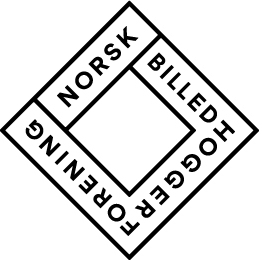Åsil Bøthun
Metamorfe ekko (2024)
Betong
Bøthuns skulptur er både en personlig referanse til hennes egen oppvekst i Bodø, og en henspilling til områdets geologiske historie – i både fortid og fremtid. Med en form som henviser til både det organiske og industrielle, blir skulpturen som en geologisk hybrid.
Der skulpturen ligger nær vannet i Stokkvika ligner den en monumentalt skjelett. Formene er gjenkjennelige som ryggvirvlene til en hval, men de har også et industrielt preg. De er nemlig også basert på tverrsnittet fra kroppen til et militærfly. I tillegg til å spille på Bodø som flyby er det også en referanse til kunstnerens familiehistorie, hvor yrkesmilitære familiemedlemmer har opplevd flyhavari – det ene i fjorden rett utenfor Bodø. I tidligere arbeider har en fallskjerm som reddet livet til hennes far, senere brukt i barndomslek, også vært en viktig referanse i kunstnerskapet.
Den slående likheten og sammensmeltningen mellom fly – og hvalkroppen utfordrer skillet mellom det naturlige og menneskeskapte. I en tid hvor Bodø gjennomgår store endringer som følge av nedleggelse av militærflyplassen, forestiller skulpturen seg området i de lange geologiske linjene.
Åsil Bøthun (f. 1971) er utdannet ved Kunsthøgskolen i Oslo. Hun er professor i skulptur og installasjon, og bor og arbeider i Bergen som prodekan ved Fakultet for Kunst, Musikk og Design, Universitetet i Bergen. I sine skulpturer tematiserer hun ofte transformasjon, spor og avtrykk. Hun har stilt ut ved blant annet Vigelandmuseet (2018), KODE, Bergen(2018), Kunstnerforbundet (2020), Galleri Soft (2021) og 1st International Contemporary Material Art Biennale, Qingdao, Kina (2022).
Spørsmål eller henvendelser? Send mail til nbf@skulptur.no
English
Åsil Bøthun
Metamorphic Echos (2024)
Concrete
Bøthun's sculpture is both a personal reference to her own upbringing in Bodø and a nod to the area's geological history – in both the past and future. With a form that references both the organic and the industrial, the sculpture becomes a geological hybrid.
Positioned near the water in Stokkvika, the sculpture resembles a monumental skeleton. The shapes are recognizable as whale vertebrae, but they also have an industrial character. They are in fact based on the cross-section of a military aircraft body. In addition to referencing Bodø as an aviation city, it also connects to the artist's family history, where several military family members experienced aircraft crashes – one of which occurred in the fjord just outside Bodø. In previous works, a parachute that saved her father's life, later used in childhood play, has also been an important reference in her artworks.
The striking similarity and fusion between the airplane and whale body challenge the distinction between the natural and the man-made. At a time when Bodø is undergoing significant changes due to the closure of the military airbase, the sculpture envisions the area in long geological timelines.
Åsil Bøthun (b. 1971) is educated at the Oslo National Academy of the Arts. She is a professor of sculpture and installation and lives and works in Bergen, where she serves as Vice Dean at the Faculty of Fine Art, Music, and Design at the University of Bergen. In her sculptures, she often explores themes of transformation, traces, and imprints. She has exhibited at various venues, including the Vigeland Museum (2018), KODE, Bergen (2018), Kunstnerforbundet (2020), Galleri Soft (2021), and the 1st International Contemporary Material Art Biennale, Qingdao, China (2022).





